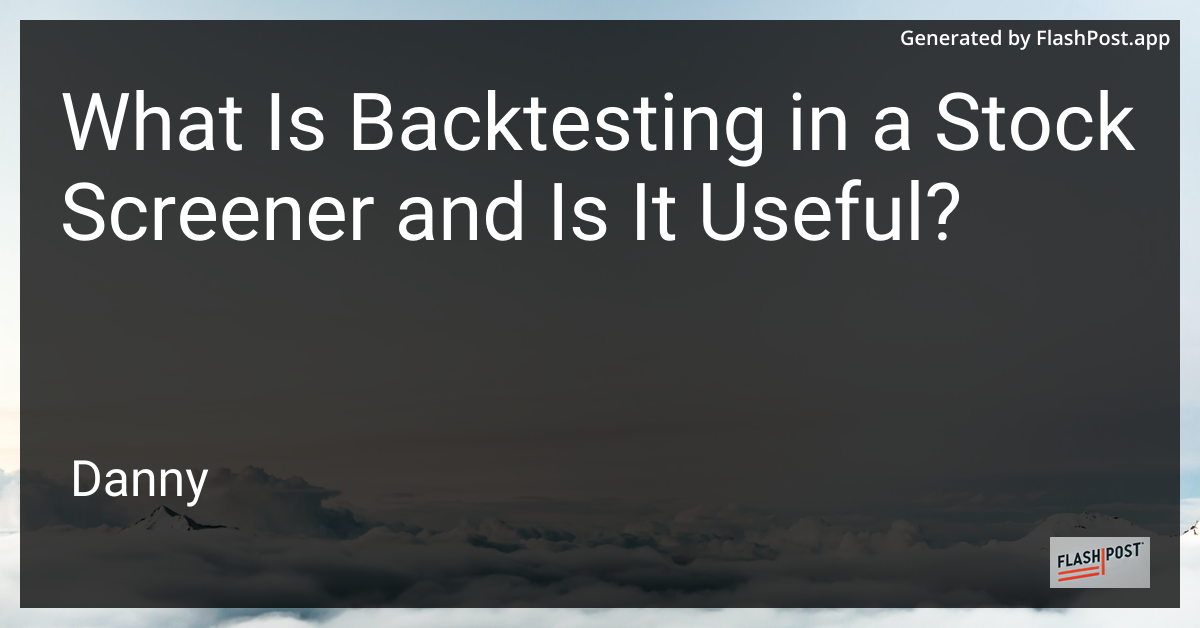
In the realm of financial markets, making informed decisions is paramount. Investors and traders are continually seeking tools and methods that provide them with the best chances for success. Among these, backtesting emerges as a powerful technique, particularly when used in conjunction with a stock screener. But what exactly is backtesting, and how beneficial is it?
Understanding Backtesting
Backtesting is a method used to evaluate the effectiveness of a trading strategy or system by applying it to historical data. In essence, backtesting allows traders to simulate how a particular strategy would have performed in the past, using real historical market data as the context.
Here's how it typically works:
- Selection of a Strategy: The strategy you wish to test is selected. It could involve various technical indicators or conditions, such as moving averages, RSI, or MACD.
- Compilation of Historical Data: Historical market data relevant to the strategy is gathered. This might include price, volume, and any other critical data points.
- Execution of the Backtest: The strategy is then applied to the historical data, mimicking trades as if it were live trading.
- Analysis of Results: The results are analyzed to determine the strategy's profitability, risk, and overall effectiveness.
The Role of Backtesting in a Stock Screener
A stock screener is a tool that allows investors and traders to filter stocks based on particular criteria or indicators. By integrating backtesting capabilities, a stock screener becomes even more valuable. Here's why:
- Strategy Validation: Before committing real money, traders can validate and refine their strategies. This reduces the risk of unexpected losses.
- Performance Metrics: Traders can access metrics such as annual return, volatility, win/loss ratios, and maximum drawdown, helping them understand the potential risks and rewards.
- Time Efficiency: Testing strategies on historical data is significantly faster and more efficient than live testing, which can be time-consuming and costly.
- Historical Context: By using historical data, traders can assess how their strategies perform under different market conditions, increasing adaptability.
Is Backtesting Useful?
Absolutely! Backtesting provides numerous benefits for traders and investors, which include:
- Risk Management: By understanding how a strategy would have worked in the past, traders can better manage potential risks.
- Confidence Building: Knowing that a strategy has been successfully tested can provide traders with the confidence to execute it in live markets.
- Continuous Improvement: Regular backtesting allows for continuous refinement and improvement of strategies, as traders learn from past mistakes and successes.
Despite its many advantages, it's important to remember that past performance does not guarantee future results. The market is continually changing, and a strategy that worked yesterday might not work tomorrow. Therefore, alongside backtesting, traders should also employ forward testing and keep abreast of current market conditions.
In conclusion, backtesting is an invaluable tool for those using a best stock screener as it aids in strategy development and risk management. While it is not foolproof, the insights gained from thorough backtesting can significantly improve the chances of success in the complex world of stock trading.